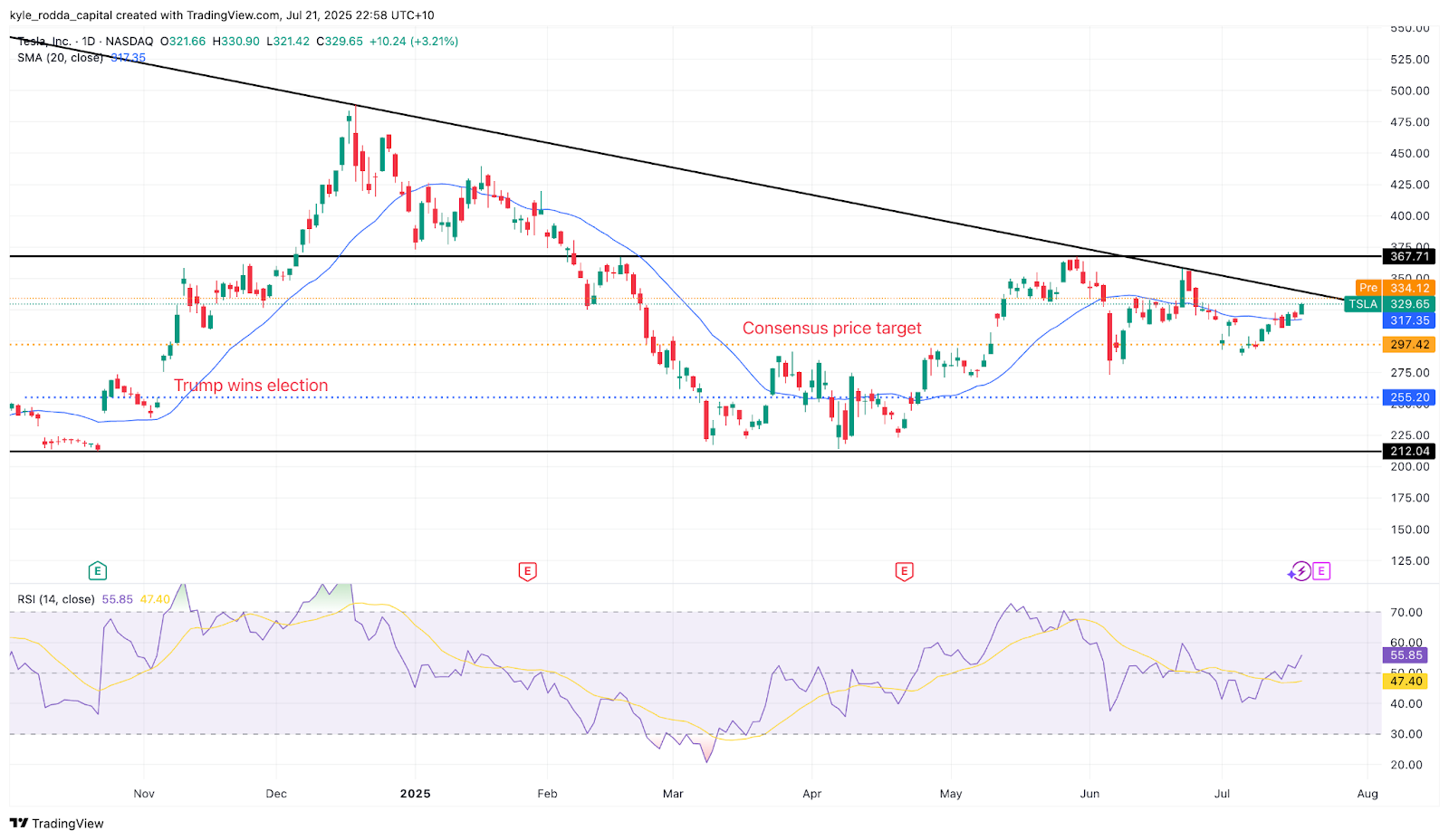Tesla Q2 Earnings Preview: Long term headwinds persist despite signs of improvement
Tesla earnings expected to pick-up but challenges for the company persist
Tesla is set to report second-quarter earnings on July 23, and while the numbers may show signs of a rebound from the first-quarter slump, there are still several reasons for caution. But deeper concerns remain—particularly around profitability, brand damage, and growing competition in an increasingly crowded EV market.
Revenues to rebound but earnings expected to remain tepid
Analysts expect Q2 revenue to hit $22.63 billion, up from $19.335 in Q1, as Model Y Juniper deliveries gain momentum. Adjusted earnings per share are forecast at $0.42, slightly higher than last quarter but down on a year-over-year basis by around 11%. Net income is projected at $1.44 billion, reflecting improved operating efficiency, but still well below levels seen in 2023. Tesla has a mixed track record on earnings surprises, missing estimates in six of the past eight quarters.
Model Y gains momentum but margins remain pressured
Tesla delivered 384,000 vehicles in Q2—down from the previous quarter as sales volumes remain weak. Margins are also being squeezed per unit. Tesla continues to prioritise scale over per-unit profitability, using discounts and incentives to maintain sales momentum, particularly in the face of stiff competition. The Robotaxi remains a source of excitement and expected future earnings growth. However, the product has yet to hit the scale necessary for monetisation.
And that competition is intensifying. Chinese EV makers, including BYD and NIO, are expanding globally with lower-cost models and strong domestic scale advantages. Legacy automakers like Ford and Volkswagen are also stepping up their EV offerings, pressuring Tesla’s market share—especially in Europe and China. As the EV market becomes more commoditised, Tesla's ability to command a pricing premium is increasingly in question, especially amidst deteriorating brand equity.
The energy business remains the growth driver
Tesla’s energy business continues to expand, with strong year-on-year growth in battery deployments. But U.S. policy risks are starting to cloud the outlook. The recent rollback of clean energy tax credits as part of the U.S. budget, possibly worsened by frayed relations between CEO Elon Musk and US President Donald Trump, could weigh on growth in the second half of the year and beyond. While energy remains a margin-supportive segment, its contribution to total revenue is still modest.
Musk’s politics hit brand equity and Tesla’s sales
Another emerging risk is reputational. Elon Musk’s increasing politicisation because of his connection to US President Donald Trump and other controversial political figures has raised concerns that Tesla’s brand appeal is weakening. This shift could reduce demand and sales growth further, and erode Tesla’s traditional brand moat, which has long been a key part of its valuation premium.
Analysts remain divided on the long run value of Tesla
At $329.65, Tesla trades above its 12-month consensus target of $297.50, implying downside risk in the near term. Just 47.5% of analysts rate the stock a Buy, while 31% recommend Hold and 21% have a Sell. The forward P/E multiple sits above 160x— on the surface reflecting very strong growth expectations and significant advancements in the RoboTaxi and energy units.
The technicals show a battling to regain upward momentum but looking for a catalyst. Sentiment is mixed if not slightly bearish, suggesting a lot of bad news could already be baked into the price. A break of downward sloping trendline resistance could signal a more sustained recovery. Very strong, long-term resistance is around the $210 level.

(Source: Trading View)
(Past performance is not a reliable indicator of future results)